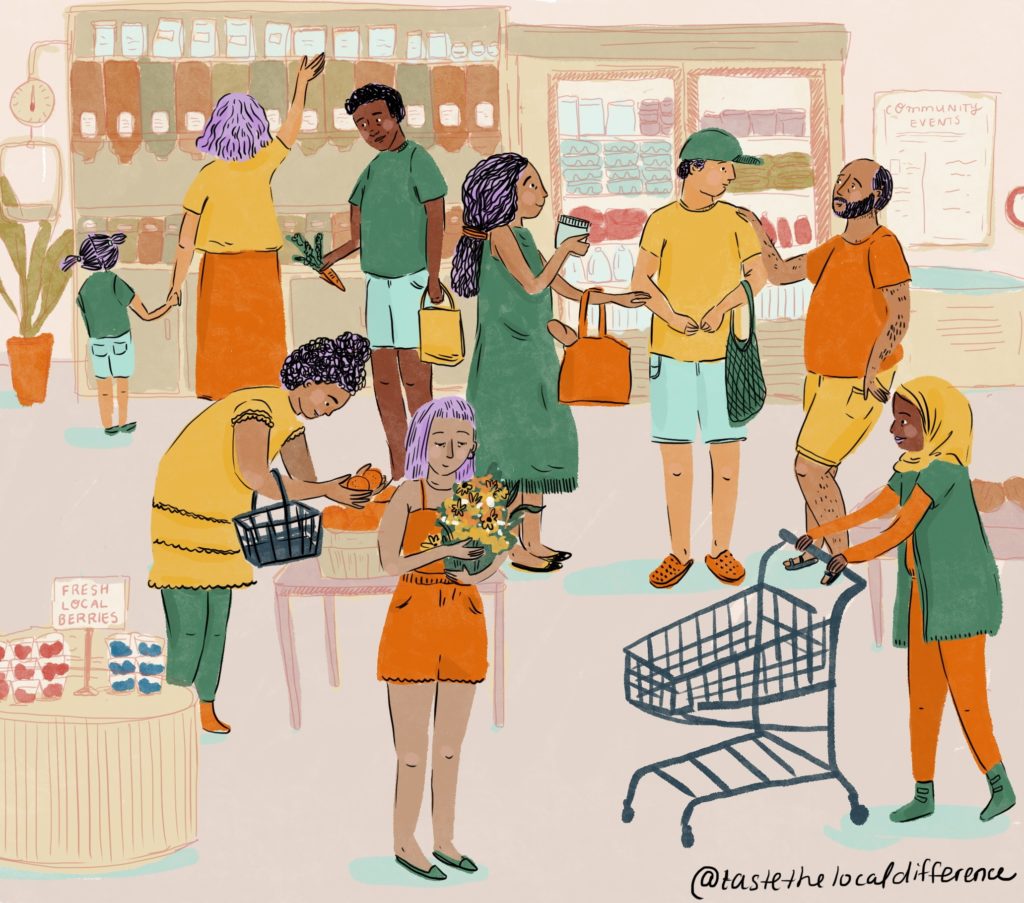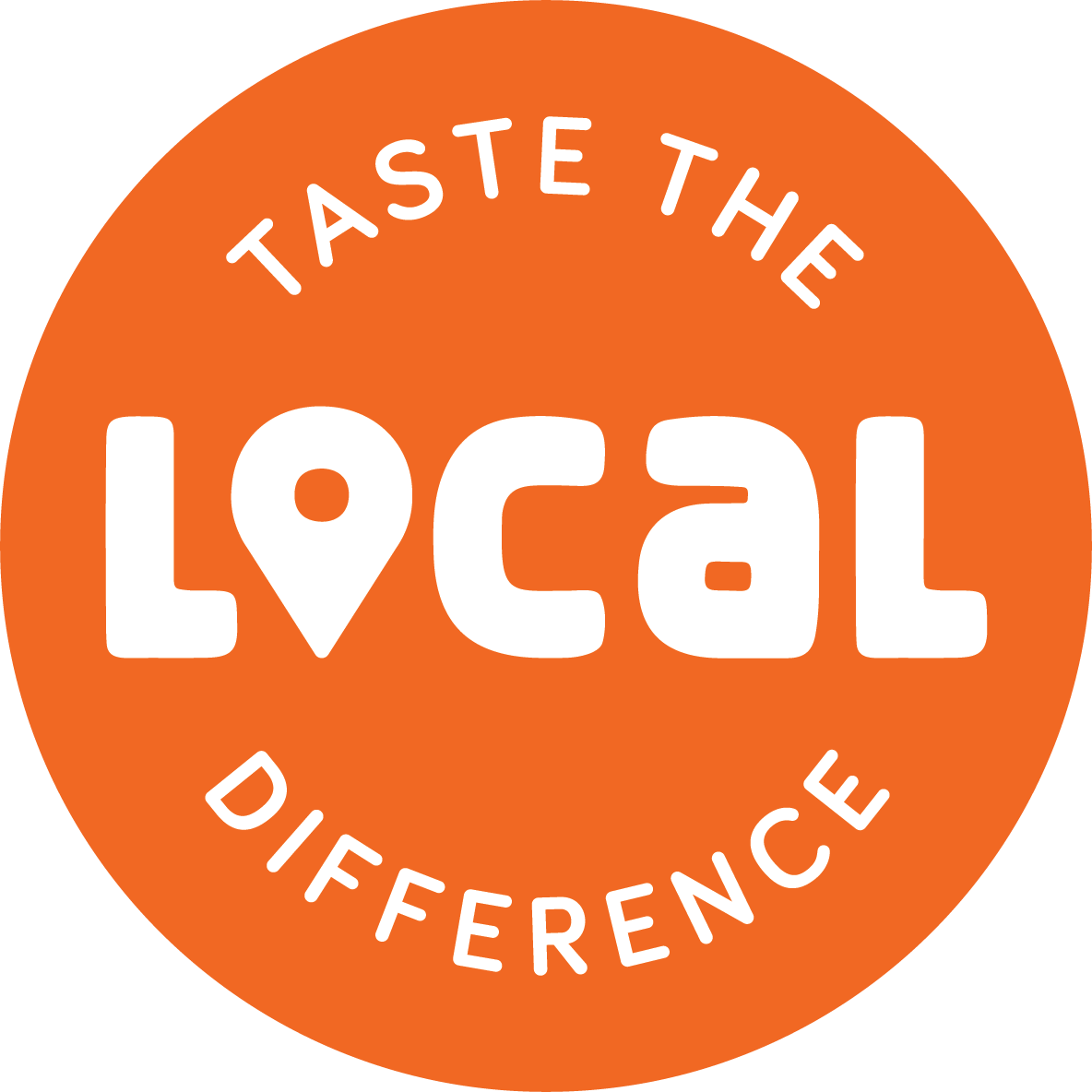Food cooperatives (co-ops) started to form in the late 1800s as communities relocated from farmland to cities where they relied on stores, instead of their own crops, to get the food and supplies they needed. Today, most food co-ops look like smaller grocery stores, often featuring local produce, organic pantry goods, and a deli section.

First, let’s bust some myths.
- Despite stereotypes of patchouli smells and “kale yeah” tee shirts, co-ops aren’t just a hippie thing. Co-ops reflect the community in which they exist. And if it doesn’t, anyone can become a member to make their voice and values heard!
- Accessibility is important to cooperative models. Most co-ops strive to make their offerings affordable to everyone by accepting food assistance dollars, offering deals, and special discount days. Check with your local co-op for details.
- Most food co-ops don’t require you to be a member to shop. Although there are benefits to becoming a member, it’s not mandatory to enjoy the fresh veggies and other local products.
How are food co-ops structured today?
While each food co-op is distinct, they often follow a similar model based on membership. In exchange for a fee, an individual becomes a shared owner with other cooperative members. In storefront models, a food co-op is a place where members decide what’s on the shelves, where product is purchased, and what standards need to be met with the intention of making prices fair for shoppers and producers.
Why join a food cooperative?
In a society of big box grocery stores, food co-ops offer community members a say in what and how they eat. Food co-ops disrupt corporate food access models by sharing store ownership with community members since stores are owned by the people who shop there, not entities disengaged with the local community. Plus, if the co-op turns a profit during the year, the excess is returned to the members in the form of dividends. Members can choose to reinvest funds back into their co-op, use the benefit for in-store purchases, or cash it out.
Cooperative models strengthen local food systems and economies by supporting local businesses and vendors who offer culturally relevant products. In addition to increasing the market for seasonally available products, when the community holds the authority, they can prioritize businesses whose practices respect people and the environment. Often, co-ops will have a wide selection of specialty diet foods and bulk purchasing options.
How do you join a food co-op?
Cooperative memberships are acquired through financial investment, whether it’s a one time fee or paid out in installments. Once a member, you share in the financial success of the store through coupons, discounts, and dividends. Most co-ops allow members a vote in choosing the cooperative’s board of directors.
Learn more about some Michigan food co-ops here or find your local co-op using our local food and farms directory!
Emily Row is the Brand and Media Manager at Taste the Local Difference. You may contact her via email [email protected].
Further Reading:
